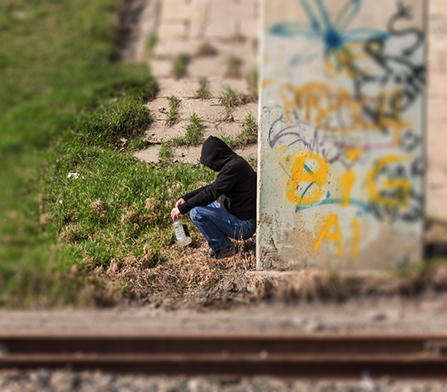America’s Libraries: Family Havens or Shooting Rooms for the Addicted?
For nearly three hundred years, America’s libraries have been locations for study, research, and entertainment. Millions of children over these centuries have searched for adventure stories and educational materials with their parents. But recently, events in some urban and suburban libraries have taken an ugly turn. Addicted citizens have been choosing bathrooms in these establishments to prepare injections of heroin or other drugs, sometimes with fatal or near-fatal results.

As recently reported by CBS News, overdose victims have been reported in Eureka, California; Batesville, Indiana; New Brunswick, New Jersey, and suburban Chicago. A librarian in Ann Arbor, Michigan said, “People need to know that this is happening everywhere and that public libraries haven’t done anything wrong to cause it to happen.”
All Kinds of Bathrooms Offer Privacy for Injecting Drug Users
Libraries are only the latest location to struggle with this problem. Addicts have been preparing and using injections in gas station, retail store and public bathrooms for a long time. As in these examples:
- In Louisiana, two parents used a playground bathroom to inject heroin—with their two small children in tow.
- A Pennsylvania woman injured a policeman when he tried to arrest her after she used the bathroom in a Target store as an injection site.
- A young woman in Franklin, New Jersey was arrested after someone tipped off store employees about someone spending a suspiciously long time in the bathroom of a Walmart. She was found to have heroin, syringes and marijuana in her possession.

Dramatic Changes to the Life of a Librarian
For many decades, the main concerns of librarians have been noise-makers and overdue books. But no longer. In many libraries, the staff are now being cross-trained to be first responders. Librarians must be shown how to use naloxone to revive those who have overdosed and they must know how to cope with the homeless who might seek refuge indoors. Because the homeless have nowhere private to inject drugs, they are more likely than someone with a home to try to use library bathrooms.
In response to this problem, Boston libraries have installed syringe disposal boxes and have offered employees and residents from the community training on how to prevent overdoses. And in Toledo, Ohio as well, the library system’s security staff are being taught what they need to know to coordinate with the sheriff’s Drug Abuse Response Team.
The phenomenon is yet another sign of the urgent need for more rehabilitation facilities for those trapped in addiction, and better prevention measures for those who are not addicted. At Narconon Ojai, we are proud to be part of a fifty-year tradition of offering both rehabilitation and prevention to Americans and those in dozens of other countries.
To get help for someone you care about,
call us today
REFERENCE LINKS
https://www.cbsnews.com/news/libraries-becoming-popular-places-for-drug-users-to-shoot-up-heroin/
https://www.nola.com/news/crime_police/article_331f6182-20e1-5144-81e7-6ca0a6f934fe.html
https://www.nj.com/sussex-county/2015/08/cops_woman_was_shooting_heroin_in_walmart_bathroom.html


